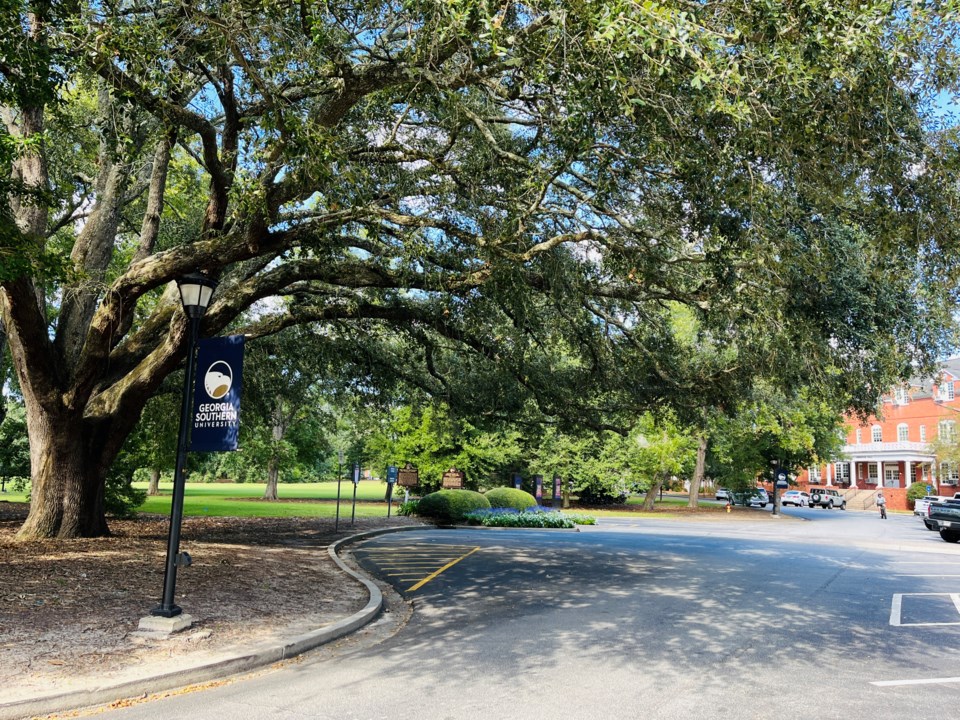Georgia Southern University’s most recent Economic Monitor reflects that the Savannah metro area’s economy slowed during the second quarter of the year, and a local recession is unlikely.
“Following a nearly two-year period during which the growth trajectory slowed, the regional economy gave up some ground,” stated Michael Toma, Ph.D., Georgia Southern’s Fuller E. Callaway Professor of Economics. “At this point, forward momentum for the remainder of 2023 in the Savannah metro area is tied closely to growth in port activity, non-residential construction supporting the logistics industry and the regional tourism and hospitality sector. While it is clear regional economic growth has notably slowed, it remains highly likely Savannah will avoid recession in the second half of 2023.”
Continued moderation into 2024
The business forecasting index fell for the fifth consecutive quarter, which suggests continued moderation in the Savannah metro economy into early 2024. Similar to the first quarter, leading indicators from both the regional housing market and labor market were mixed. Continued higher interest rates of approximately 6.8% on 30-year mortgages maintained the headwinds, limiting upside potential in the residential construction market for single-family homes.
In the labor market, a modest decline in new filings for unemployment insurance benefits does not mask the fact that new filings remain about 15% higher than one year ago.
As in the first quarter, prospects for regional economic growth through 2023 are increasingly related to the pace of hiring for the Hyundai Metaplant and its associated suppliers. While the U.S. economy seems to be avoiding the most widely forecasted recession ever, at least for now, concerns remain about higher-than-desirable core inflation. Subsequently, interest rates are expected to remain higher than previously thought through 2024.
Employment trends send mixed signals
While the total number of jobs reported increased 1,900 workers from the first to the second quarter, the underlying data for each of the major sectors of the economy collectively shed 600 workers. The largest concentration of losses accumulated in logistics and retail trade, totaling about 500 jobs each, signifying that other service sectors collectively experienced offsetting job growth during the quarter.
For the first half of 2023, however, the total and sum of the individual sector data are in alignment, showing an increase of 3,400 workers (+1.7%) as compared to year-ago data. Total employment in the metro area averaged 201,000 through mid-2023.
Employment in the service economy fell by 700 workers during the quarter. This was partly offset by gains of 300 workers in business and professional services, 200 workers in tourism/hospitality and a scattering of service sector jobs in other sectors. The education and health sector and tourism/hospitality are the two largest employment sectors in the region with both having nearly 29,000 workers each.
Regional tourism indicators were mixed during the second quarter. Tax receipts from hotel room and short-term vacation rental sales generally remain on a strong upward trend, although there is some volatility in the data masking the short-term, quarter-to-quarter change. Quarterly boardings at the airport increased modestly by 1.1%. Rental car tax receipts increased but alcohol sales taxes declined after adjusting for seasonality and inflation.
The goods-producing side of the economy added 200 workers during the quarter. Manufacturing held steady at about 18,900 workers. Construction-sector employment increased by 300 to stand at 9,500, its highest level since the Great Recession, which occurred from late 2007 to 2009.
Private sector wages increased modestly during the quarter, rising to $25.25 per hour from $25.01. Wage rates appear to have stabilized after a sharp drop in the prior quarter. Nonetheless, hourly wages remain about 4% lower as compared to year-ago data. The length of the private sector workweek held steady at 32.3 hours.
Housing Market
The issuance of construction permits for single-family homes fell 4% from the previous quarter but remained about 10% above comparable levels from one year ago. The number of permits issued for single-family homes was 580 in the quarter as compared to 603 in the previous quarter. The average value for each single-family unit rebounded slightly, rising 3.3% to $257,500 from $249,400. In a notable development, the number of multi-family residential units permitted surged to 652 units during the quarter, which was roughly the same amount as in the previous 12 months. During the past 18 months, 1,634 multi-family units have been permitted. The last time multi-family permits were issued in similar numbers was between 2006 and 2008.
In the labor market, the monthly number of initial claims for unemployment insurance (UI) fell 3.5% to 724 from 751 in the previous quarter. This, however, remains 15% higher than the average of a year ago. The seasonally adjusted regional unemployment rate modestly declined from 3.1% in the first quarter to 2.9% in the second quarter and moved up slightly from 12 months ago (2.8%).
A Note from the Analyst
The Economic Monitor is available by email and at Georgia Southern’s Center for Business Analytics and Economic Research’s website. If you would like to receive the Monitor by email send a ‘subscribe’ message to [email protected].
About the Indicators
The Economic Monitor provides a continuously updated quarterly snapshot of the Savannah Metropolitan Statistical Area economy, including Bryan, Chatham and Effingham counties in Georgia. The coincident index measures the current economic heartbeat of the region. The leading index is designed to provide a short-term forecast of the region’s economic activity in the upcoming six to nine months.
Georgia Southern University, a public Carnegie Doctoral/R2 institution founded in 1906, offers approximately 140 different degree programs serving more than 25,500 students through 10 colleges on three campuses in Statesboro, Savannah, Hinesville and online instruction. A leader in higher education in southeast Georgia with expert faculty, the University is focused on public impact research and engaging learning opportunities through knowledge and know-how that prepare our students to take ownership of their lives, careers and communities. Visit GeorgiaSouthern.edu.




